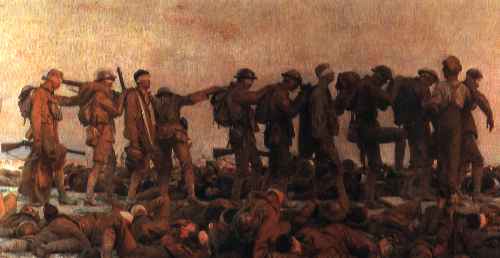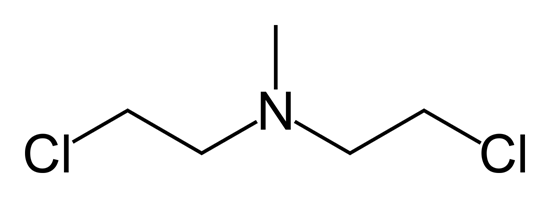Entries Tagged as 'Mustard Gas'
April 25th, 2008 · Comments Off on Taking the Next Step: More Sources on Mustard Gas
Categories: Mustard Gas
April 25th, 2008 · 1 Comment
Categories: Mustard Gas
April 25th, 2008 · Comments Off on In Flander’s Field: Mustard Gas Affects History
Categories: Mustard Gas
April 25th, 2008 · Comments Off on By Any Other Name: Origins of Mustard Gas
Chemical Warfare: an Introduction to Mustard Gas | Chemically Speaking: the Structure of Mustard Gas | By Any other Name: Origins of Mustard Gas | In Flander’s Field: Mustard Gas Affects History | Agent of War to Anti-Cancer Drug: History Affects Mustard Gas | Taking the Next Step: More Sources on Mustard gas

Scientists involved in the discovery/synthesizing:
- César-Mansuete Desperetez (1798-1863): Reported on some of the properties of a combination of sulfur dichloride and ethylene, which reflected some of the properties of Mustard Gas, though without the irritating effects.
- Albert Niemann (1834-1861): First to describe Mustard Gas’s toxic properties,
- Frederick Guthrie (1833-1886): Synthesized and described the properties of mustard gas.
- Victor Meyer (1848-1897): Synthesized a purer product, which produced irritants that both take a long time to appear (hours after exposure) and take a long time to heal. (Above)
- Hans T. Clarke (1887-1972): Improved Meyer’s process as well as observing that by not breathing in the fumes or allowing contact with the skin that the molecule is “perfectly safe”.
Other Names of Mustard Gas:
- Bis(2-chloroethyl) sulfide
- Iprit
- Kampfstoff “Lost”
- Lost;
- Mustard Gas
- Senfgas
- Yellow Cross Liquid
- Yperite
- Distilled Mustard
- Mustard T- mixture
[Read more →]
Categories: Mustard Gas
April 25th, 2008 · Comments Off on Chemically Speaking: Structure of Mustard Gas
Categories: Mustard Gas
Chemical Warfare: an Introduction to Mustard Gas | Chemically Speaking: the Structure of Mustard Gas | By Any other Name: Origins of Mustard Gas | In Flander’s Field: Mustard Gas Affects History | Agent of War to Anti-Cancer Drug: History Affects Mustard Gas | Taking the Next Step: More Sources on Mustard Gas
Every day Saddam remains in power with chemical weapons, biological weapons, and the development of nuclear weapons is a day of danger for the United States.
Sen. Joseph Leiberman, D-CT, Sept. 4, 2002
Weapons of mass destruction are just that. A weapon that has the ability to take out a large portion of the population. Although history has yet to decide the fate of the Iraq War, one thing is clear. Historically, chemical agents have been used to take out a large group of people with little harm sustained from the other side. World War I marks the first “successful” use of chemicals against the enemy, with later uses in World War II, South Africa, an Iraq to name a few.The type of agents included under the term “chemical warfare” include: blood agents, blister agents, nerve agents, pulmonary agents, incapacitating agents, and riot control agents. Currently, the Chemical Weapons Convention outlaws the production, stockpiling, or use of chemical weapons.

Gassed by John Singer Seargent
[Read more →]
Categories: Mustard Gas





